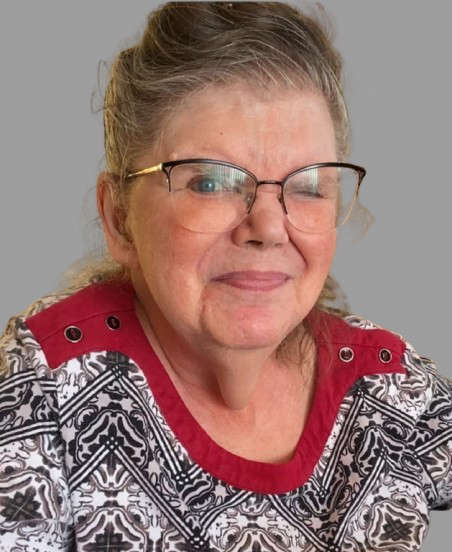
A hidden jewel located in the Seto Inland Sea, off of Kagawa Prefecture is a very unique and wonderous tiny island that is saturated with contemporary and modern art museums and installations.
To be honest, I had never heard of this place until good friends, Jen Mertens and her husband, Ono, bought property there and opened an Air BnB on the island. Since it was during Covid, we had no problem securing a reservation in her Air BnB, and it was easy to find restaurants with space without reservations (photo below).
Upon learning about this uniquely wonderful place, I immediately began researching about it and realized it was a must-see area in Japan and we made plans to go visit. Luckily for us, as I mentioned earlier, it was during Covid, so the island was not overrun with French tourists as it normally is, so we were able to enjoy all it had to offer without the complication of being crowded with other tourists.
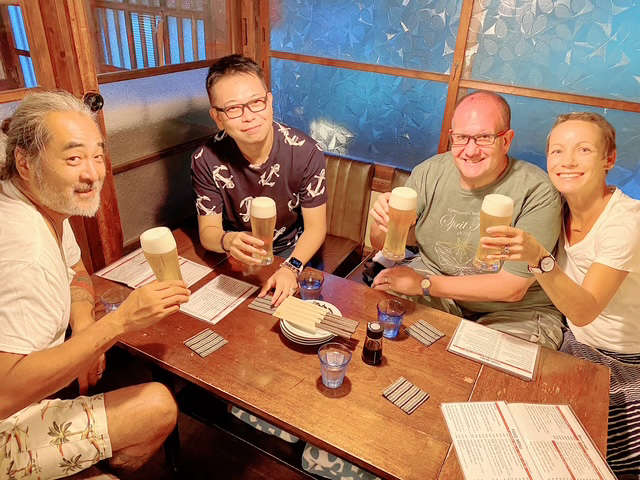
I am not sure how French people first learned about Naoshima, or why they are so keen to visit this island, but they make up the largest percentage of visitors there during the tourist season.
Actually, I do know why French tourists are so enamored with this island. Frankly, Naoshima is an art lover’s paradise -- I am talking to you Bonnie Gibson (formerly of Shelbyville) and Gloria da Silva von Oiste (two friends who are huge art lovers and museum aficionados). I fully expected Naoshima to be extraordinary but I couldn’t have imagined just how special it turned out to be with its world-class art museums sprinkled about its shores.
The Benesse Corporation is the main benefactor of the museums that were designed by the renowned Japanese architect, Tadao Ando. His style of architecture strives to create a sense of earnest simplicity nestled within intense minimalist beauty, emphasizing the oblivion or nothingness of empty space which has been described by art experts as having a “haiku” effect where even a complex distinctive area maintains the appearance of profound simplicity.
His buildings are nearly always made out of concrete and he is self-taught which makes his designs all the more impressive.

On Naoshima Island, his architectural designs include the Chichu Art Museum, Lee Ufan Museum, and the Benesse House complex. His newest design, the Naoshima New Museum of Art, is scheduled to open later this month on May 31 near Honmura. No doubt it will be as equally impressive and outstanding as his other designs.
Many of the island’s municipal buildings and schools were designed by the modern architect Kazuhiro Ishii, which also adds to the allure of the island. Naoshima’s guiding principle is “Symbiosis of Nature, Architecture, and Art.”
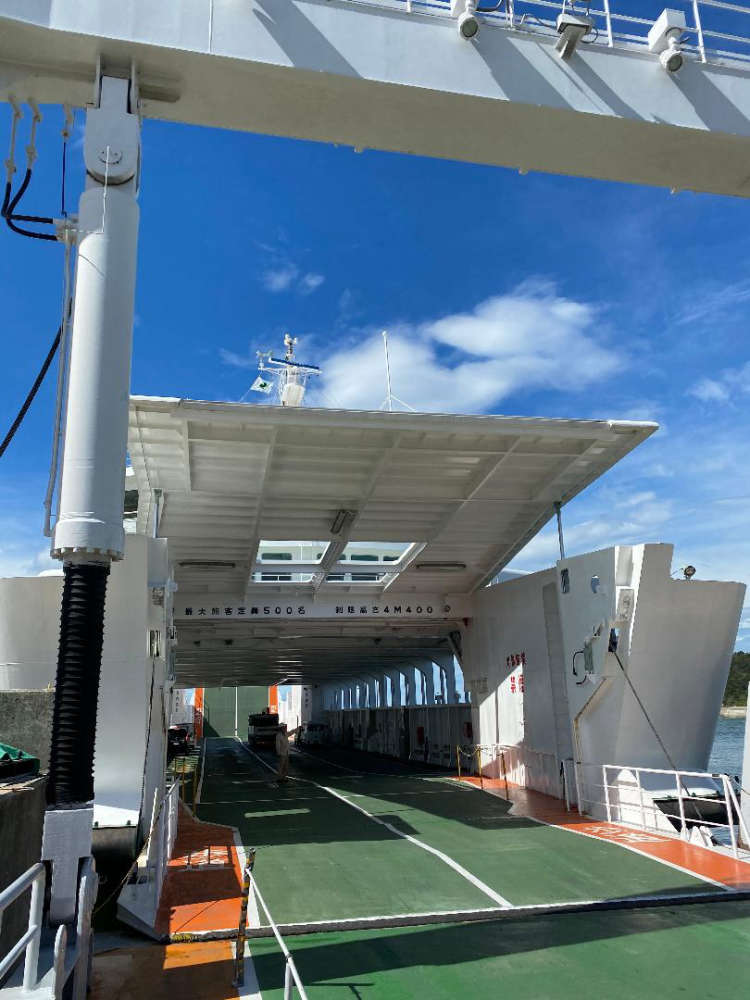
The island is basically divided into three main areas and is accessed via ferry that arrives to the Naoshima port from Kagawa (photo). The western part of Naoshima is called the Miyanoura sector and this is where the ferries arrive and is considered to be the main entry point to the island.

Visitors are greeted by a huge red, polka dotted pumpkin by renowned artist Yayoi Kusuma (photo).
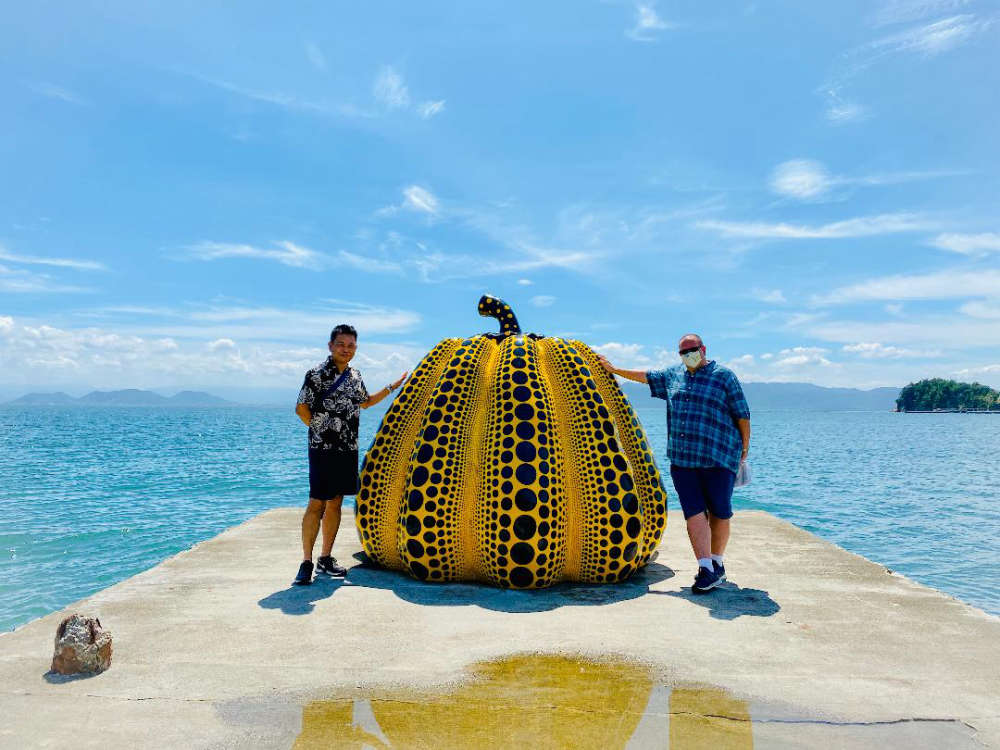
She also designed the big yellow pumpkin that is part of the many open, public displays of art installations found throughout the island (photo).
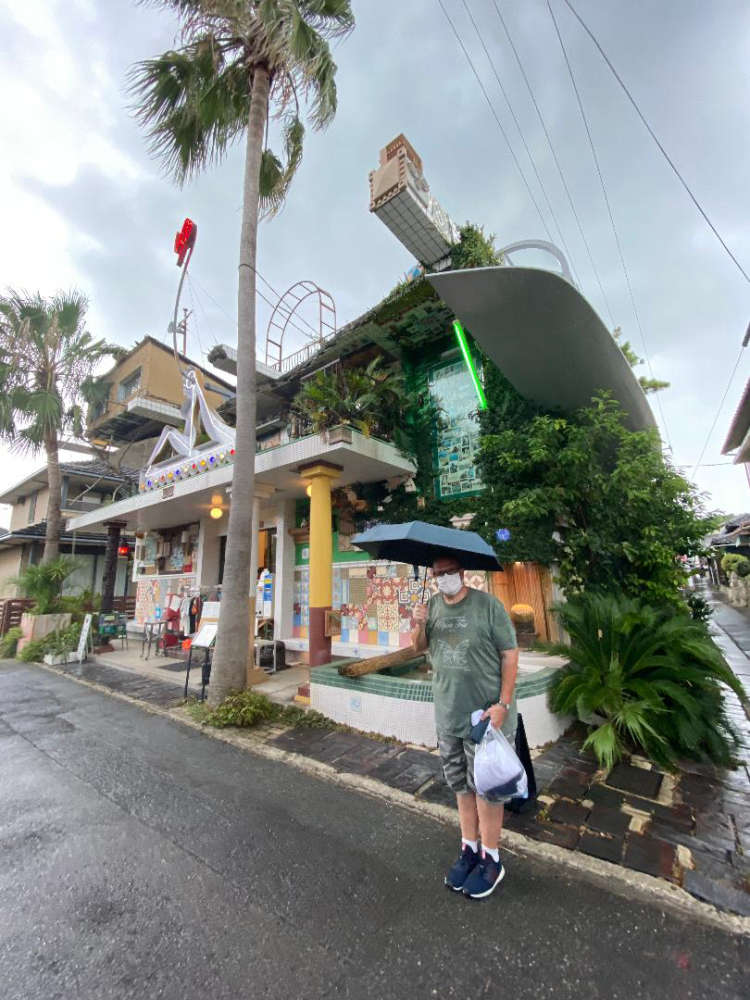
Places of interest here is the Marine Station Naoshima and the Naoshima Public bath (photo). The public bath is curiously fascinating because it is basically an art installation, and the actual bath area is one huge art exhibit. Well worth visiting and trying out for the sheer experience of it.
The eastern part of the island is called the Honmura district, and it has a tinier port for smaller vessels and features houses that have been converted into art museums, as well. In this area are the Ando Museum, Art House Project: Minamidera, Art House Project: Kinza, the Go’o Shrine (main photo), Aisunao (a delightfully traditional restaurant that features delicious vegan menu sets, all fresh and locally grown), and Art House Project: Ishibashi.
I found the Go’o Shrine to be especially interesting because instead of it being rebuilt solely as a shrine, it was restored more as an art installation featuring some rather unique and interesting characteristics, like the blocks of glass on the steps as seen in the photo.
The Hachiman Shrine, as well as other shrines are in the area to explore. The Hachiman Shrine requires a bit of a steep climb on steps which are quite long and intensive, but well worth the physical exertion to get there.
The southern part of the island is the Benesse House area that includes the meat of the museum/art experience of the island with the Chichu Art Museum, Lee Ufan Museum, Benesse House, the Yellow Pumpkin and Gotanji swimming beach, Tsusuji-sou Lodge, and for anime lovers, the “My neighbor Totoro’s Cat Bus Stop.”
I think my favorite museum on the island would be the Chichu Art Museum because while the museum is almost entirely built underground to preserve the nature surrounding it, the museum features skylights that allow natural light to pour into the building, giving visitors a feeling of being immersed in nature. The various geometric shapes of the skylights also add to its overall design. It is also unique in that when Ando was commissioned to design this museum, the permanent artwork was already decided which allowed him to design the interior to really emphasize and accentuate the art pieces that would be featured.
Outside the museum, visitors are treated to a very familiar garden — a replica of a Claude Monet Garden from one of his paintings. Inside visitors are treated to works by Claude Monet, James Turrell, and Walter de Maria. It is important to arrange beforehand a truly distinctive art experience which is a private viewing of Turrell’s Open Sky (2004) at dusk.
As the sun begins to set, the aperture of the building’s open sky area begins to take on different colors from the sky, aided by LED lights, causing a beautiful kaleidoscope of vibrant and muted colors to pass over the opening, encouraging visitors to gasp in amazement. My description doesn’t begin to express how singularly idiosyncratic this particular interactive exhibit actually is. You have to experience it to truly appreciate it. It lasts for about an hour.
As I was preparing to write this column, I realized I didn’t have any photos of the interiors of the museums, or even exteriors, for that matter. I guess I was so immersed in the total art experience that I failed to think to snap photos … or maybe no photos were allowed inside, which could have been the case.
If you are planning a visit to Naoshima Island, I highly recommend at least two nights to really get to all the art installations and museums that are available to visitors, as well as the public bath. Also, it seems that many places are closed on Mondays and Tuesdays, so plan your visit later in the week to avoid missing out on any of the really spectacular art museums and exhibits.
My only real complaint about the island were the announcements on the buses. The stops were announced clear enough, but did not necessarily announce the main attraction for that stop, but sometimes a municipal building or other non-touristy type of landmark. So, unless you had a really firm understanding of where things were, the stop announcements would be meaningless.
And when I visited, there were only announcements in Japanese which would make it difficult for visitors who do not understand Japanese.
To contact Todd Jay Leonard directly, he can be reached at toddjayleonard@yahoo.com. He enthusiastically welcomes questions and comments from readers.





